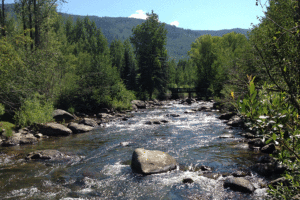What is a “Hoot-Owl” Rule and What Does That Have to Do with Healthy Rivers?
 As those in the southwest know, the region remains in one of the most severe droughts in human memory. The prolonged dry spell has affected stream flows, water quality, and the recreation economies tied to flowing rivers. As just one example, angling was curtailed this summer on many of Colorado’s major rivers. Water leaders for the Yampa, San Juan, Animas, and Rio Grande employed a “Hoot Owl” rule, closing fishing in the afternoon hours when flows were low and water temperatures were at record highs. These restrictions support the state’s fish and wildlife, but put a dent in river-related recreational activities that contribute close to $9 billion to the Colorado economy every year.
As those in the southwest know, the region remains in one of the most severe droughts in human memory. The prolonged dry spell has affected stream flows, water quality, and the recreation economies tied to flowing rivers. As just one example, angling was curtailed this summer on many of Colorado’s major rivers. Water leaders for the Yampa, San Juan, Animas, and Rio Grande employed a “Hoot Owl” rule, closing fishing in the afternoon hours when flows were low and water temperatures were at record highs. These restrictions support the state’s fish and wildlife, but put a dent in river-related recreational activities that contribute close to $9 billion to the Colorado economy every year.
The business community is increasingly stepping up with solutions to support innovative projects and partnerships that keep these rivers flowing. In Colorado and New Mexico, for example, BWS’ work with corporate partners including Danone North America, Swire-Coca-Cola, Intel, and others helped advance innovative projects led by Trout Unlimited, Colorado Water Trust, and Audubon.
This work helped keep the water flowing in many of Colorado’s iconic rivers:
- Roaring Fork
- Yampa
- Rio Grande
- Gunnison
Additionally, BWS was part of a collaboration with Audubon-New Mexico and several companies to keep sections of the Rio Grande in New Mexico from running dry. Read the story here.
Across the West drought, climate change and low flows have potential to harm our rivers and water supplies. Yet NGOs, the business community, and water users are coming to the table to implement solutions to keep water in rivers. BWS is excited to be a part of these partnerships and help match corporate investment with projects throughout the U.S. If your business would like to contribute to these efforts please contact Sara Hoversten shoversten@b-e-f.org.
